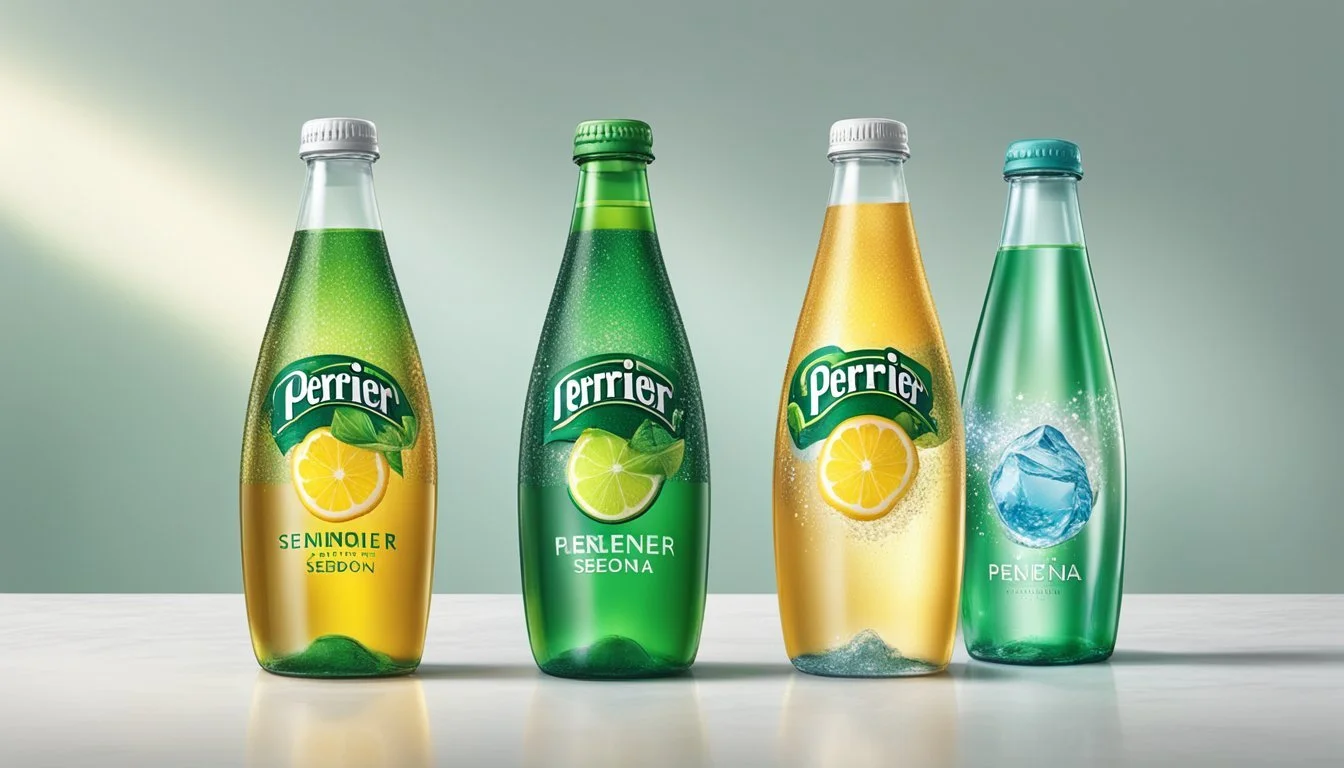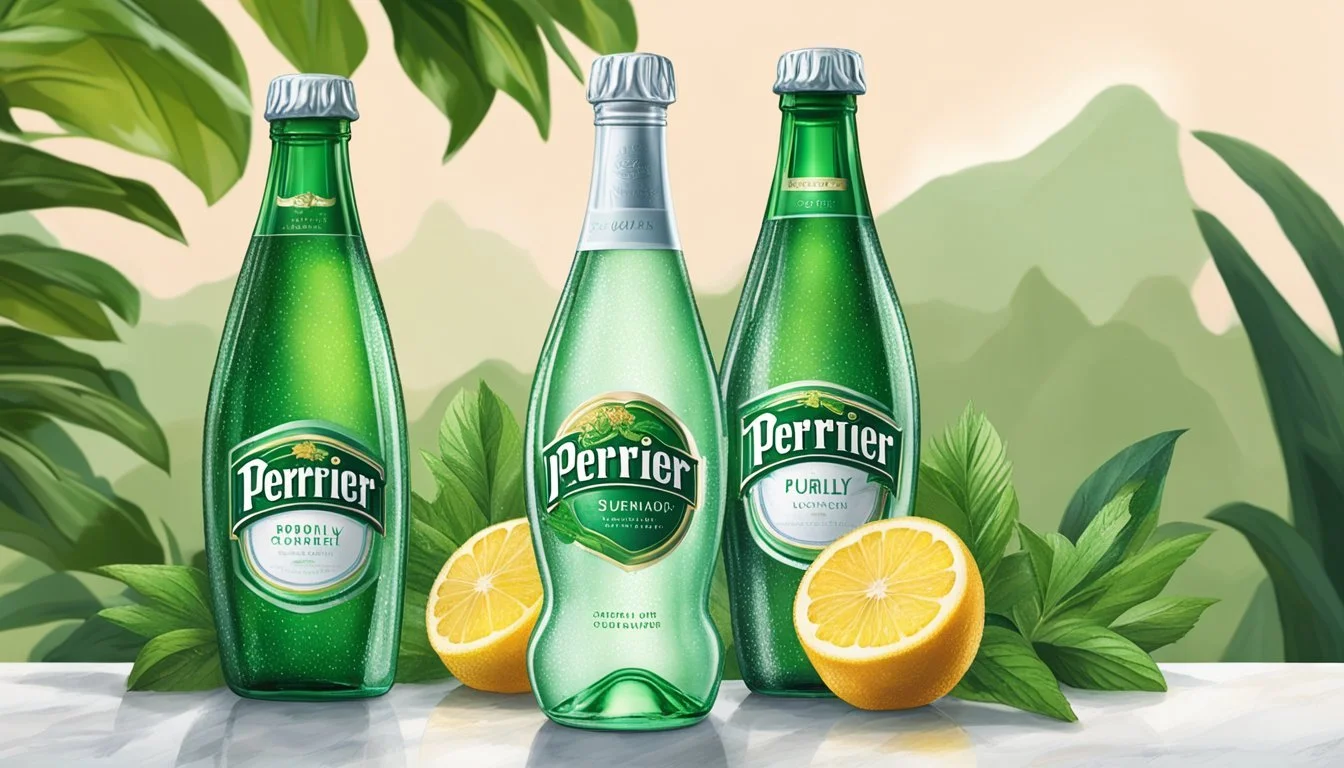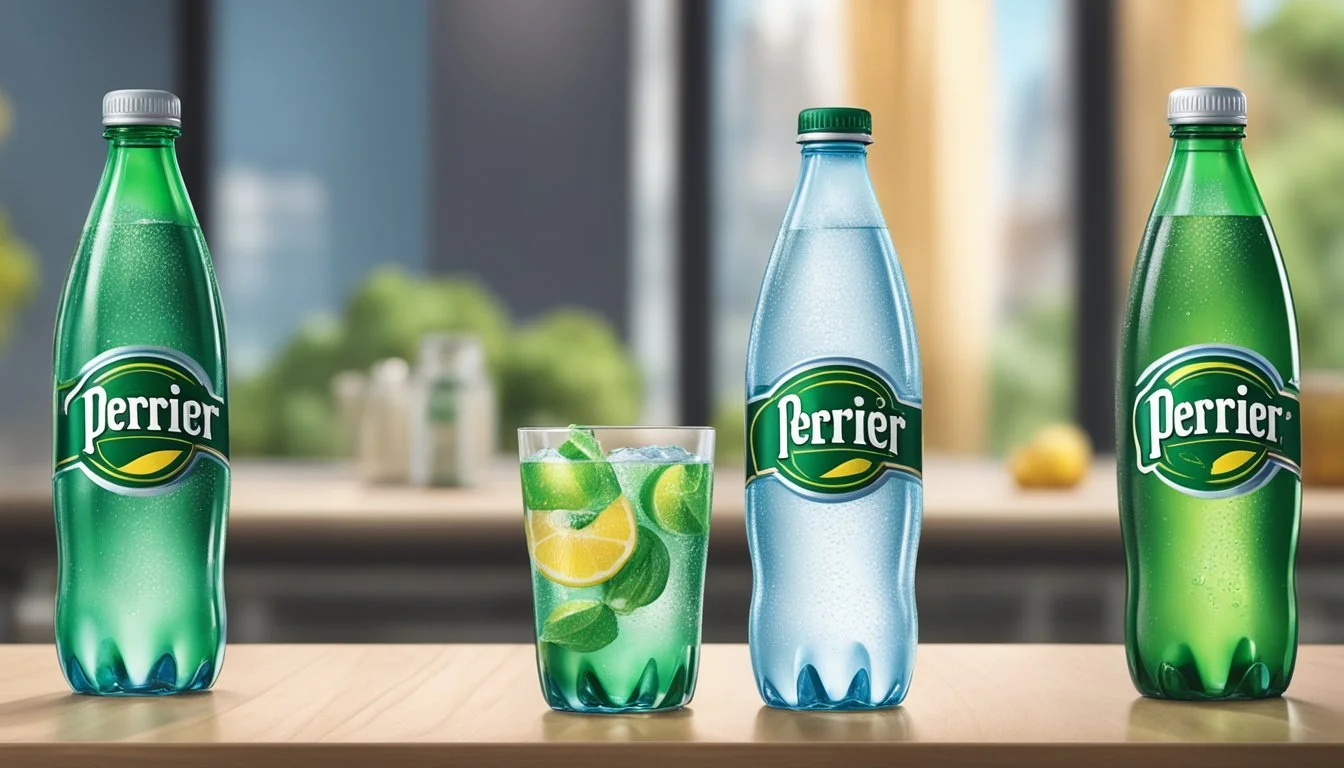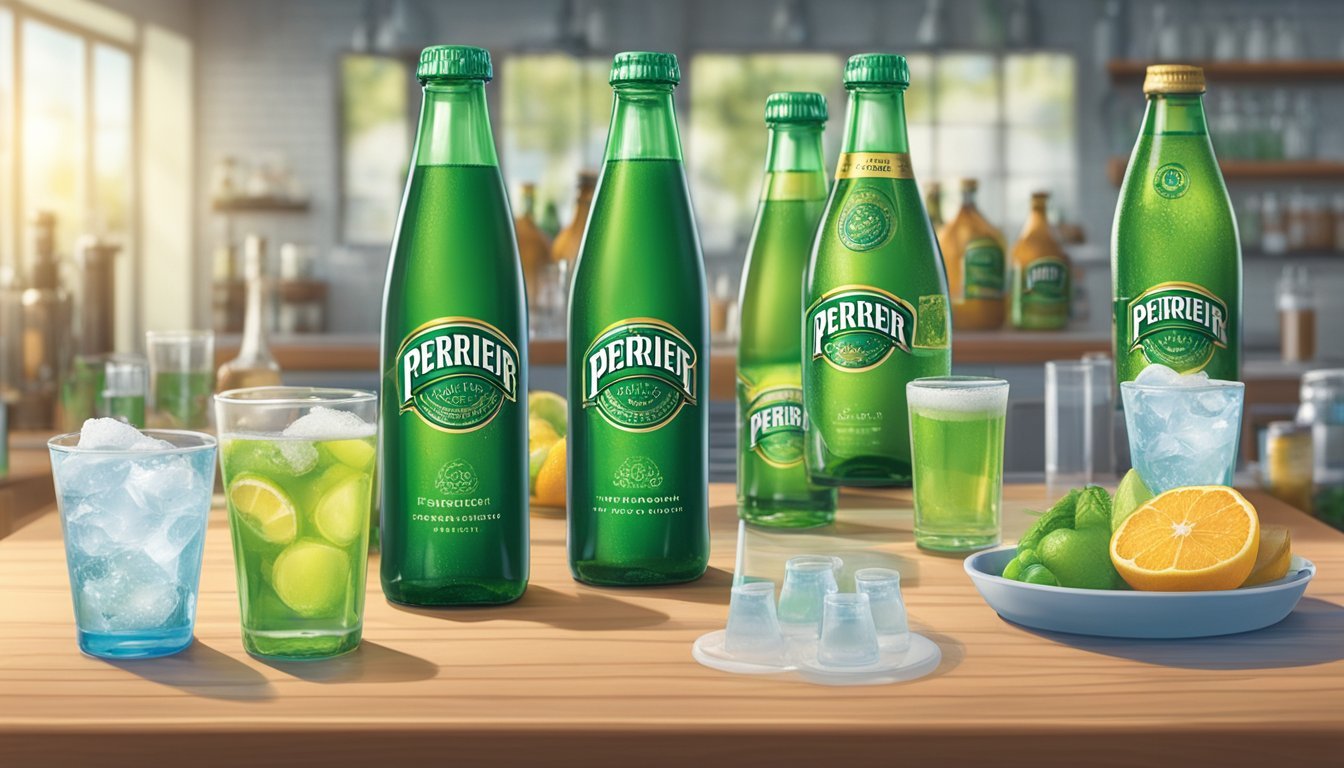Perrier vs. Purely Sedona
Which Bottled Water is Better for You?
When it comes to selecting the right bottled water, taste, quality, and source are crucial factors. Perrier, known for its sparkling nature and rich mineral content, has been a preferred choice for many. In comparison, Purely Sedona, sourced from the pristine artesian wells in Arizona, offers a refreshing and smooth taste.
Perrier’s sparkling water stands out with its natural carbonation and slightly tangy profile, making it a favorite for those who enjoy a bit of fizz. On the other hand, Purely Sedona's distinct advantage lies in its pure, untreated water that retains its natural minerals without any added carbonation. This makes it ideal for those looking for a clean and straightforward hydration option.
Ultimately, choosing between Perrier and Purely Sedona boils down to personal preference. Whether you crave the effervescence of Perrier or the purity of Sedona7, both brands offer unique benefits that cater to different tastes and needs.
Understanding Bottled Water
Bottled water comes in various forms, each offering unique benefits and characteristics. When understanding these differences, it's also crucial to consider the role of regulation, health implications, and environmental impact.
Types of Bottled Water
Bottled water can be categorized into several types:
Spring Water: This is sourced from underground aquifers and is collected at the point where water flows naturally to the surface.
Mineral Water: Contains minerals and trace elements. These minerals must be naturally occurring and may offer health benefits.
Sparkling Water: This carbonated water contains dissolved carbon dioxide gas, creating bubbles. Examples include Perrier and S. Pellegrino.
Alkaline Water: Known for a higher pH level than regular water, it is believed to help balance the body's acidity levels.
Using proper filtration and purification methods, including reverse osmosis, many bottled types ensure clean and safe drinking water.
Regulatory Oversight and Safety
The EPA regulates tap water, while bottled water falls under the FDA jurisdiction. This oversight ensures that bottled water meets safety standards for consumption.
Both agencies mandate regular testing for contaminants, including bacteria and chemicals. Labels often detail the source of the water and the purification process used (like reverse osmosis or filtration).
Consumers should check for certifications or seals of approval that indicate adherence to safety standards.
Health Implications of Bottled Water
Different types of bottled water can have varying effects on health.
Mineral Water: Known for beneficial minerals like calcium and magnesium.
Alkaline Water: Some believe it helps neutralize body acidity, although research is ongoing.
Sparkling Water: Often enjoyed for its carbonation, but individuals with digestive issues might need to consume it sparingly due to its carbonic acid content.
Regular monitoring and transparency from manufacturers about mineral content and pH levels help ensure consumers make informed choices.
The Environmental Impact of Bottled Water
Bottled water consumption has significant environmental implications.
Plastic Pollution: Single-use plastic bottles contribute to large volumes of waste. Efforts to recycle are sometimes insufficient due to low recycling rates worldwide.
Carbon Footprint: The production and transportation of bottled water also result in a higher carbon footprint compared to tap water. Shipping water across regions consumes significant energy.
Consumers are encouraged to seek sustainable options, such as reusable bottles and water from local sources, to mitigate this impact.
The Brands in Focus
This section explores the distinct characteristics of Perrier and Purely Sedona, focusing on their origins, water sources, and production processes. Understanding these elements helps clarify what each brand offers and how they cater to different consumer preferences.
Perrier: An Overview
Perrier is a well-known sparkling water brand that originated in Vergèze, Southern France. Its history dates back to 1863, when the source was discovered and later commercialized.
Famous for its naturally carbonated bubbles, Perrier offers a refreshing and effervescent beverage. It is bottled at the source and marketed globally as a symbol of sophisticated hydration.
In addition to its original flavor, Perrier expands its portfolio with various flavored options, making it a versatile choice for different tastes.
Purely Sedona: An Overview
Purely Sedona prides itself on purity and local heritage. It sources its water from a natural spring in Sedona, Arizona. The brand emphasizes its commitment to delivering clean, natural water, free from any additives.
Its marketing strategy highlights the pristine nature of the region. Bottled at the source, Purely Sedona ensures that the water retains its natural characteristics from spring to bottle.
Purely Sedona targets consumers who prefer natural and minimally processed water, positioning itself as a premium option within the bottled water market.
Comparison of Water Sources
Perrier and Purely Sedona both source their water from natural springs, though from vastly different locations. Perrier's spring is in the Vergèze region of Southern France, known for its naturally occurring carbonation and mineral content.
In contrast, Purely Sedona sources water from the spring waters of Sedona, Arizona, famous for its clarity and purity. Both brands emphasize "bottling at the source" to maintain the integrity of their water.
This geographic and geological diversity contributes to the distinct taste profiles and characteristics of each brand, appealing to different consumer preferences.
Production and Bottling Processes
Perrier's production process involves capturing the naturally carbonated water directly from its source in Vergèze. The bottling is meticulously handled to ensure the preservation of its unique effervescence and mineral content.
On the other hand, Purely Sedona focuses on minimal processing, emphasizing the natural purity of its spring water. The water is bottled at the source in Sedona, with a process designed to maintain its pristine quality.
Both brands utilize state-of-the-art technology to ensure the water remains uncontaminated and true to its natural origins from source to bottle.
Analyzing Water Properties
The detailed comparison of Perrier and Purely Sedona water includes aspects such as mineral content, taste, and pH levels. These properties can affect not just the flavor but also the potential health benefits associated with each water type.
Mineral Content and Health Effects
Perrier is known for its higher mineral content, particularly calcium and magnesium. Calcium is essential for bone health, while magnesium supports muscle function and energy production. Perrier also contains bicarbonate and potassium, which help in neutralizing stomach acid and supporting cardiovascular health.
Purely Sedona, on the other hand, contains fewer minerals. It features a subtle presence of beneficial minerals like magnesium and calcium, but in lower amounts compared to Perrier. Sodium and chloride levels are also minimal, making it a good option for those monitoring their sodium intake.
Tasting Notes: Perrier vs. Purely Sedona
Perrier has a distinct taste characterized by a crisp and slightly bitter flavor due to its high mineral content, especially calcium and magnesium. This sparkling water offers a refreshing and robust mouthfeel, often enjoyed as a sophisticated beverage on its own or as a mixer in cocktails.
Purely Sedona presents a smoother and cleaner taste, attributed to its lower mineral content. The subtlety of flavor makes it more versatile for various uses, from casual hydration to culinary purposes. The softer finish and mild flavor profile cater to those who prefer a less intense mineral taste.
pH Level and Alkalinity
Perrier typically has a pH level ranging from 5.5 to 6.5, making it slightly acidic. Despite this, its mineral composition can have a neutralizing effect on stomach acid, providing a balance in acidity and alkalinity that some find beneficial.
Purely Sedona usually features a higher pH level, often in the range of 7.5 to 8.0, making it more alkaline. This higher pH level is appealing to those seeking the purported benefits of alkaline water, such as better hydration and potential neutralization of body acidity. The alkaline nature can offer a smoother drinking experience for many consumers.
Exploring Carbonation
When distinguishing between Perrier and Purely Sedona, understanding their differences in carbonation is essential. This section will highlight the characteristics of sparkling water and the role of carbon dioxide in these beverages.
Sparkling Water and Its Appeal
Sparkling water attracts many due to its bubbly and refreshing nature. The effervescence created by dissolved carbon dioxide gas differentiates it from still water. Consumers often choose sparkling water for hydration because it feels more lively and flavorful.
Brands like Perrier capitalize on this, offering a consistent and distinctive fizz that has made it a popular choice worldwide. The bubbly sensation can also make drinking water more enjoyable, encouraging higher consumption levels.
Purely Sedona, in contrast, focuses on pure, locally-sourced water that maintains a natural taste. While not naturally sparkling, its appeal lies in its purity and local heritage. This makes it a favored option for those who prefer non-carbonated but high-quality bottled water.
The Role of Carbon Dioxide
Carbon dioxide (CO₂) is what gives sparkling water its characteristic bubbles. This gas is either naturally occurring in some spring waters or added during the bottling process. The amount and method of CO₂ addition can significantly affect the taste and texture of the water.
For example, Perrier is known for its slightly tangy taste, resulting from its natural mineral content combined with carbonation. The dissolved CO₂ creates carbonic acid, giving the water a subtle acidic flavor and a refreshing bite.
Purely Sedona, while prized for other qualities, does not employ carbonation. Knowing this distinction can help consumers decide based on their preference for sparkling versus still mineral water. This understanding is crucial for selecting the right bottled water brand for any particular occasion or need.
Perrier vs. Purely Sedona in the Market
Perrier and Purely Sedona have distinct identities in the bottled water market, each with its own strengths and consumer preferences. This section examines their brand reputation, market trends, and pricing differences.
Brand Reputation and Consumer Perception
Perrier has a long-standing reputation as a sophisticated, high-quality sparkling water brand. Known for its iconic green bottle, Perrier is often associated with elegance and luxury. Its branding appeals to a broad demographic, particularly among consumers looking for a premium dining experience.
Purely Sedona, on the other hand, is celebrated for its crisp and refreshing still water, sourced locally from Sedona, Arizona. This brand appeals to those who support local businesses and value natural, pure water. Purely Sedona emphasizes its regional ties, which resonate especially well with consumers in the Southwestern United States.
Sales and Market Trends
In terms of sales, Perrier has a significant global presence, often found in restaurants, cafes, and retail outlets worldwide. Its strong international distribution contributes to its substantial market share in the beverage industry. Perrier continuously innovates with various flavors and packaging options, which helps maintain its market position.
Purely Sedona, meanwhile, focuses on the U.S. market, particularly in regions close to its source. While it may not match Perrier's global footprint, it has seen steady growth due to increasing consumer demand for locally-sourced and sustainable products. Purely Sedona's commitment to community engagement and eco-friendly practices has helped it carve out a niche market.
Price Comparison
When comparing prices, Perrier tends to be on the higher end of the spectrum. This is due to its premium branding and imported status. A typical bottle of Perrier can be more expensive than many other sparkling waters on the market.
Purely Sedona positions itself as a premium still water but is often priced more competitively within its category. The localized production means lower transportation costs, allowing them to offer a high-quality product at a slightly lower price point compared to other premium brands. This pricing strategy appeals to consumers who seek value without compromising on quality.
Complementary Products and Alternatives
Both Perrier and Purely Sedona offer unique profiles that can be complemented by various products and contrasted against other popular bottled water brands.
Mixers and Flavor Enhancers
Perrier's carbonation makes it an excellent mixer in cocktails and mocktails. It pairs well with juices and spirits, adding a fizzy texture. Many enthusiasts use Perrier to enhance fruit flavors and make refreshing drinks, such as lime Perrier or lemon Perrier spritzers.
Purely Sedona, known for its purity, is ideal when a clean, unaltered water taste is desired. Adding citrus or berries can enhance its flavor without overshadowing its natural profile.
Popular flavor enhancers like Bubly also work well, offering a range of flavors that complement both sparkling and still water varieties.
Comparing with Other Brands
Perrier’s competitors include San Pellegrino, Topo Chico, and La Croix, all recognized for their sparkling options. While each has its unique taste and carbonation level, Perrier stands out for its fine bubbles and minerality.
Purely Sedona compares well with Evian and Fiji, which are known for their smooth, clean taste. Essentia, with its alkaline water, also serves as a good comparison, though it targets a different market segment with its higher pH level.
Smartwater and Voss present sleek, premium options, often chosen for their stylish bottles. Each brand has its merits, catering to different preferences and occasions.
Conclusion
Perrier and Purely Sedona offer unique qualities that cater to different preferences and needs.
The Bottom Line
Perrier is renowned for its sparkling nature and consistent quality. This brand is often linked with sophistication and fine dining. Key features include:
Sparkling texture
Consistent quality
High-end branding
Purely Sedona, on the other hand, emphasizes purity and local heritage. It appeals to those who prefer natural still water with a local touch. Important points are:
Purity-focused
Local heritage branding
Natural still water
Recommendations:
Choose Perrier for a fizzy, refreshing experience ideal for social events and dining. Opt for Purely Sedona if you prioritize still water with local, natural attributes.
More About Perrier
Icelandic Glacial vs Perrier: Which Bottled Water is Better?
Mountain Valley Spring Water vs Perrier: Which Bottled Water is Better?
Perrier vs Kirkland Signature: Which Bottled Water is Better?
Perrier vs Richard's Rainwater: Which Bottled Water is Better?
Perrier vs Whole Foods Italian Still Mineral water: Which Bottled Water is Better?
More About Purely Sedona
Aqua Carpatica vs Purely Sedona: Which Bottled Water is Better?
Boxed Water vs Purely Sedona: Which Bottled Water is Better?
Castle Rock vs Purely Sedona: Which Bottled Water is Better?
Core Hydration vs Purely Sedona: Which Bottled Water is Better?
Hawaii Volcanic vs Purely Sedona: Which Bottled Water is Better?
Hawaiian Springs vs Purely Sedona: Which Bottled Water is Better?
Ice Mountain vs Purely Sedona: Which Bottled Water is Better?
Icelandic Glacial vs Purely Sedona: Which Bottled Water is Better?
Mountain Valley Spring Water vs Purely Sedona: Which Bottled Water is Better?
Nestle Pure Life vs Purely Sedona: Which Bottled Water is Better?
Poland Spring vs Purely Sedona: Which Bottled Water is Better?
Purely Sedona vs Cascade Mountain: Which Bottled Water is Better?
Purely Sedona vs Crystal Geyser: Which Bottled Water is Better?
Purely Sedona vs Crystal Lake: Which Bottled Water is Better?
Purely Sedona vs Essence pH10: Which Bottled Water is Better?
Purely Sedona vs Kirkland Signature: Which Bottled Water is Better?
Purely Sedona vs Liquid Death: Which Bottled Water is Better?
Purely Sedona vs Proud Source: Which Bottled Water is Better?
Purely Sedona vs Richard's Rainwater: Which Bottled Water is Better?
Purely Sedona vs Simple Truth: Which Bottled Water is Better?
Purely Sedona vs Talking Rain AQA: Which Bottled Water is Better?
Purely Sedona vs Weird Water: Which Bottled Water is Better?
Purely Sedona vs Whole Foods 365: Which Bottled Water is Better?
Purely Sedona vs Whole Foods Italian Still Mineral water: Which Bottled Water is Better?
San Pellegrino vs Purely Sedona: Which Bottled Water is Better?
Solan de Cabras vs Purely Sedona: Which Bottled Water is Better?
Zephyrhills vs Purely Sedona: Which Bottled Water is Better?







